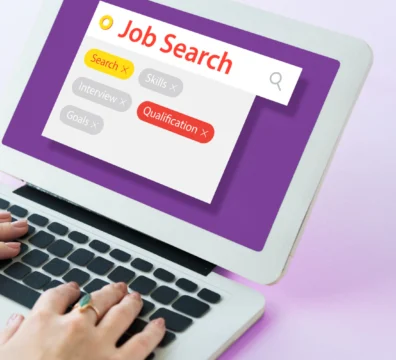Wouldn’t you like to have a heads up about when your employees are quitting so you can find a timely replacement so as not to impact organisational performance?
Do you think it’s wishful thinking? Most certainly not!
Predictive HR analytics can help you predict people-related challenges beforehand. Employees can exit your company for multiple reasons, from poor work culture, low productivity, and office politics to compensation issues and more.
According to research, 7 out of 10 employees wouldn’t work in a top company with a poor workplace culture. While other employees would prefer more job flexibility, better training and development opportunities, etc., you can predict future employee requirements and market trends with predictive agent analytics.
If you plan to implement such strategies in your business, first understand what they are and their importance from our guide.
What is Predictive HR Analytics?
Attracting and retaining top employees is one of the biggest challenges for recruiters. Every company has a huge volume of HR data. Still, according to studies, only a few use this data to optimise HR processes. You can use that data effectively with predictive HR analytics for better data-driven decisions.
But what exactly are HR predictive analytics tools? These are modern tech tools that analyse your past and present data to help you forecast future business outcomes. It digitally digs through your raw data and extracts, analyses, and categorises the information to identify different patterns, irregularities in your systems, and correlations.
With predictive analysis, you will no longer operate your business on instinct or lessons learned from past mistakes. These statistical analysis and predictive modelling offers valuable insights that help you make efficient data-driven decisions.
Real-Life Examples of Predictive HR Analytics
Let us take a few predictive analytics in HR examples to better understand how companies implement such technologies in real life.
HP’s Prediction and Prevention of Employee Turnover
In 2008, HP found they were losing employees at an alarming rate. Initially, they thought people left the company because of poor management. However, after research, HP realised that it was not the reason. This is when they developed a predictive workforce analytics program called “Project Insight.”
They used statistical modelling and text mining techniques to predict the future and identify which employees are to leave in the next six months. Based on the data analysis, the company then employs different techniques to retain the employee. This reduced their employer turnover rate by half the previous percentage.
Google’s Prediction for Future Outcomes
Google hires thousands of new employees yearly, but only a small percentage stays with the company for over two years. To identify the problem of why candidates leave the company, they created a predictive analytics program called Google Prediction Engine.
This tool analysed successful applicants’ employment history, education, skills, and personality traits to identify who will stay connected for longer periods. It helped reduce Google’s employee turnover rate.
Why is Predictive HR Analytics Important?
With the introduction of tools and technologies, most HR systems have been automated to ensure accuracy. But you need predictive analysis to identify why attracting and retaining candidates is getting complicated, improving productivity, and making better decisions.
Now, let us discuss the importance of HR Analytics in organisations.
Better Decision Making
Previously, your HR department made decisions based on their intuitions and experiences. But with predictive analytics, you can now make data-driven decisions that are more advanced and accurate than those made with the former methods.
By making better decisions, you save money, increase your business productivity, and improve customer satisfaction.
Reduce Risk
Aren’t you surprised to know how predictive HR analytics is related to reducing risks in business? These tools help you analyse your past and present scenarios and identify potential problems that may occur in future.
This helps you to stay prepared for such complexities and ensures you keep running the business efficiently.
Improved Business Productivity
If you implement predictive analytics talent management tactics, you can stay assured of hiring top talents. Not only are they talented, but also you can expect them to stay longer in your business.
When an experienced team backs up your business, they understand your missions and visions. They can help you improve productivity over time.
Better Recruitment
Predictive analytics tools can help recruiters identify the best sources of top talent. They do so by analysing the platform’s historical data on successful hires and then recommending you invest in them for your recruitment needs.
This saves you time and money on the wrong sources and helps you make a loyal and professional team that drives business success.
Workforce Planning
We all know that market demands keep changing, and so do the skill requirements of employees. Predictive HR Analytics helps recruiters to forecast future skill gaps within your company by considering multiple factors.
This includes retirement rates, emerging industry trends, and employee turnover rates. Your HR team can then develop employee training and development programs to reduce skill gaps and ensure your company remains competitive.
Managing Your Employee Performance
Not every day may be the same for your employees, so you must focus on their changing performance regularly. However, using predictive analytics, you can forecast future employee performance depending on the present and past performance data.
It helps you identify the high-performing people in your company who have the potential to be your successors for certain roles. Additionally, you can discover which employees are lagging behind and determine if they need training or a warning.
How 6 Pence Helps
While predictive HR analytics can help you forecast future needs and help in attracting and retaining employees, the process is complex. Therefore, you must first identify your long-term company goals and determine relevant metrics to achieve them. Then, thoroughly understand predictive analytics tools, address your ethical considerations, and implement the process.
However, if this seems complicated, contact us at 6 Pence. We will help you with temporary and permanent staffing and offer HR outsourcing services in Oman, Iraq, Bahrain and Dubai. For any queries, you can reach out to us today!
Frequently Asked Questions
What is predictive HR analytics?
Predictive HR analytics is a process that helps you analyse your past and present human resources and recruiting data to forecast your future outcomes. These tools help you make data-driven decisions and meet your future goals efficiently.
What are the 4 types of HR analytics?
The 4 types of HR analytics are descriptive, diagnostic, prescriptive, and predictive analytics.
What is the difference between predictive and descriptive HR analytics?
While descriptive HR analytics considers your historical HR data to gather a total understanding of past events, predictive HR analytics focuses on your historical data and past trends to predict future outcomes. Organisations can use both these tools to achieve the greatest business impact.
Also Read: 5 Tips to Improve Your Human Resource Employee Relations




































































































